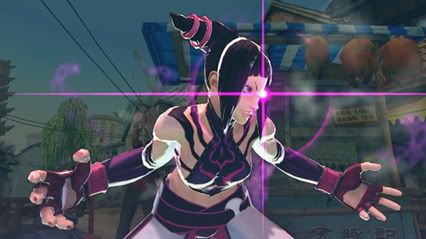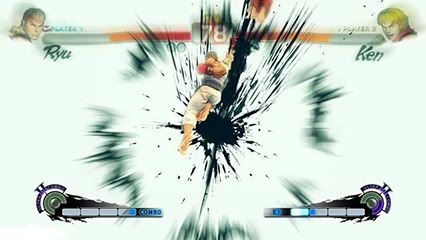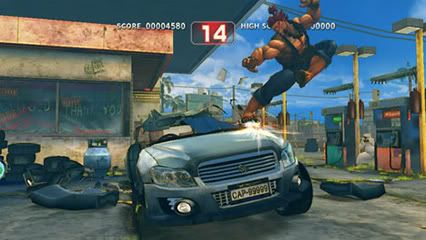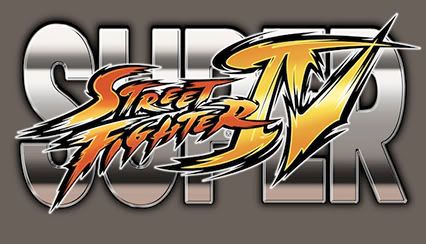- Format: Xbox 360 (version reviewed), PS3
- Unleashed: Out Now
- Publisher: Capcom
- Developer: Dimps/Capcom
- Players: 1-2 (Offline), 2-8 (Online)
- Site: http://www.streetfighter.com/
If you’re not a Street Fighter fan already, Super Street Fighter IV isn’t going to change your mind. Capcom has made a significant, but iterative update to the original Street Fighter IV, improving on the game’s core concepts without screwing with the formula. It’s Street Fighter pretty much as it always has been, and most people already know what side of the fence they stand on.
That said, as a game made for a pre-existing fanbase, Super Street Fighter IV is essential. The roster update alone is enough to make the original game obsolete. The new characters offer something for everyone, not only filling in gaps in fighting styles, but adding some much needed aesthetic appeal. New additions like Juri (an overly sexual Taekwondo fighter) and Hakan (a Turkish wrestler who slathers himself in cooking oil) may be weird, but their design and play-style blow vanilla SFIV newcomers like Rufus and El Fuerte out of the water.
 Rounding out the additions are some returning challengers from Street Fighter II, III, and the Alpha series. All told, the ten additions may not be everyone’s favourites from those games, but they fit Super Street Fighter IV perfectly. It’s hard not to look at the original roster as a mere stepping stone to the current one.
Rounding out the additions are some returning challengers from Street Fighter II, III, and the Alpha series. All told, the ten additions may not be everyone’s favourites from those games, but they fit Super Street Fighter IV perfectly. It’s hard not to look at the original roster as a mere stepping stone to the current one.
That’s not to say the original cast is lacking. On the contrary, every character has been carefully tweaked and balanced, bridging the gap between wimps like Fei-Long or Sakura and powerhouses like Sagat. Attacks are more effective, inputs for certain specials and combos are more forgiving, and the overall speed of combat has increased. It’s subtle, but if you spent any amount of time with the original you’ll feel the difference.
Each character gets an extra ultra combo as well. They’re selectable before the fight, a la Street Fighter III (without a quick reference of how to do them, boo). As usual, they seem to vary wildly in usefulness, with some a little more unique and contextual than others. There are a few that require opponents to be jumping towards you, and others that grant special abilities for a short period of time. Visually, they’re almost universally stunning (with a few standouts, like Ryu and Akuma’s). More than ever, Capcom proves that they can pull off quality animation using 3D graphics.
 The visual splendor holds true in the game’s new arenas, where Capcom clearly took a quality over quantity approach. While there’s only a handful of new locales, they’re all far more interesting than the carry-overs from the original game. The difference is so profound that it would have been nice if Capcom went back and spruced up the old arenas. The solar eclipse in Africa is particularly impressive – it’s almost distracting when day turns to night and back into day, only to reveal three hilarious hippos and a gang of meerkats cheering on the fight.
The visual splendor holds true in the game’s new arenas, where Capcom clearly took a quality over quantity approach. While there’s only a handful of new locales, they’re all far more interesting than the carry-overs from the original game. The difference is so profound that it would have been nice if Capcom went back and spruced up the old arenas. The solar eclipse in Africa is particularly impressive – it’s almost distracting when day turns to night and back into day, only to reveal three hilarious hippos and a gang of meerkats cheering on the fight.
Beyond the core gameplay experience, Capcom’s other major goal was to improve the online play. They’ve listened to fans, adding features like double-blind character selection and Endless Battle, where up to 8 players party up and take turns fighting and spectating. Endless Battle provides the groundwork for another online mode, Team Battle, which allows multiple players to gather and fight for their team’s glory. Super Street Fighter IV’s support for spectators is impressive, allowing for a far less solitary experience without sacrificing the quality of fights. Still, the core netcode for fights doesn’t seem improved over standard SFIV – lag is a reality, and while most of your fights should be smooth, they can become slide-shows on occasion.
While Super Street Fighter IV is an impressive package, it’s not perfect. What it fixes are high priority issues, but the things it doesn’t fix are still a disappointment. Single-player is still a joke, offering the same Arcade mode bookended by some embarrassing anime cutscenes. Local two-player is also lacking, light on options and terribly unfriendly to players wanting to use multiple profiles and different control schemes. The best addition to the offline side of the game is the return of the car and barrel bonus stages from Street Fighter II. They show up in Arcade mode, and are unlocked to replay in the game’s Challenge mode. Beating up a car for points is an experience no one should miss, and it’s also a nice bit of nostalgia for long-time Street Fighter fans.
 Also included in the Challenge mode is the same suite of combo trials from the original Street Fighter IV. Again, the game makes no attempts to bridge the gap between beginners and the absolute hardcore. Most of these moves are reserved for experts, requiring super-human timing and hours of practice to pull off in the heat of battle. This may be Super Street Fighter IV’s most disappointing aspect – that it, just like Street Fighter IV, reserves some of its characters’ techniques for the top tournament players and finger-olympians. At the end of the day, Capcom should be designing for its whole audience, not a handful of super-hardcore players.
Also included in the Challenge mode is the same suite of combo trials from the original Street Fighter IV. Again, the game makes no attempts to bridge the gap between beginners and the absolute hardcore. Most of these moves are reserved for experts, requiring super-human timing and hours of practice to pull off in the heat of battle. This may be Super Street Fighter IV’s most disappointing aspect – that it, just like Street Fighter IV, reserves some of its characters’ techniques for the top tournament players and finger-olympians. At the end of the day, Capcom should be designing for its whole audience, not a handful of super-hardcore players.
That said, you can play Super Street Fighter IV as a fan of the series and enjoy the game at non-superhuman skill levels. What Capcom fails to improve is far outweighed by what it adds, and if you play online, you have almost no excuse to pass on it. Those disappointed by the previous game’s roster will surely find someone to love in this addition, and without the fear that they’ll be far weaker than other player favourites. For now, as long as there’s still a 2D fighting kingdom, Street Fighter maintains the crown.
8/10


















Comments